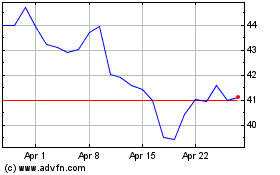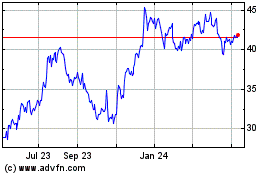Twin Bank Failures, Tally Hits 47 - Analyst Blog
June 20 2011 - 12:19PM
Zacks
After a week’s pause, U.S. regulators were back in action,
shuttering two more banks in Georgia and Florida. These pushed the
number of failed U.S. banks to 47 so far in 2011. Looking back,
there were 157 bank failures in 2010, 140 in 2009 and 25 in
2008.
While the financials of bigger banks have been stabilizing on
the back of an economic recovery, many smaller banks are still
struggling to survive. Nagging issues like rock-bottom home prices
along with still-high loan defaults and unemployment levels
continue to trouble such institutions.
Lingering effects of the financial crisis continue to weigh on
many banks. It becomes a prerequisite for such banks to absorb bad
loans offered during the credit explosion, making them susceptible
to some severe problems. The uncertain environment is aggravating
the risk of bank failures even further.
The failed banks are:
- Jackson, Georgia-based McIntosh State Bank, with total assets
of about $339.9 million and total deposits of about $324.4 million
as of March 31, 2011.
- Tampa, Florida-based First Commercial Bank of Tampa Bay, with
about $98.6 million in total assets and $92.6 million in total
deposits as of March 31, 2011.
These bank failures represent another jolt to the deposit
insurance fund (DIF) meant for protecting customer accounts, as it
has been appointed receiver for the banks.
The Federal Deposit Insurance Corporation (FDIC) insures
deposits in 7,575 banks and savings associations in the country as
well as promotes the safety and soundness of these institutions.
When a bank fails, the agency reimburses customer deposits of up to
$250,000 per account.
Though the FDIC has managed to shore up its deposit insurance
fund during the last few quarters, the ongoing bank failures have
kept it under pressure. As of March 31, 2011, the fund remained in
the red with a deficit of $1.0 billion, though substantially better
than the deficit of $7.4 billion in the prior quarter.
As the deficit significantly narrowed during the quarter and the
fund is almost close to break-even, the agency expects it to swing
back to profits in the next quarter itself.
The failure of McIntosh State Bank is expected to deal a blow of
about $80.0 million to the FDIC, while First Commercial Bank of
Tampa Bay will cost about $28.5 million.
Hoschton, Georgia-based Hamilton State Bank has agreed to assume
the entire deposits and assets of McIntosh State Bank. The FDIC and
Hamilton State Bank have agreed to share losses on $242.1 million
of McIntosh State Bank's assets.
Fort Lauderdale, Florida-based Stonegate Bank has agreed to
assume all of the deposits and assets of First Commercial Bank of
Tampa Bay. Stonegate Bank will pay a premium of 0.50% to the FDIC
for this acquisition.
The number of banks on FDIC’s list of problem institutions saw a
marginal increase to 888 in the first quarter from 884 in the
previous. This is the highest number since 928 problem institutions
cropped up way back in March 31, 1993, due to the then savings and
loan crisis.
Increasing loan losses on commercial real estate could trigger
hundreds of bank failures in the coming years. Going by the current
rate of bank insolvencies, the DIF is likely to feel a $52 billion
dent by 2014. However, considering the fail trail so far this year,
the FDIC does not expect the number of bank failures in 2011 to
surpass the 2010 tally.
With so many bank failures, consolidation has become the
industry fashion. For almost all of the failed banks, the FDIC
enters into purchase agreement with healthy institutions.
When Washington Mutual collapsed in 2008 (branded as the largest
bank failure in the U.S. history), it was acquired by
JPMorgan Chase & Co. (JPM) The other major
acquirers of failed institutions since 2008 include U.S.
Bancorp (USB) and BB&T Corporation
(BBT).
BB&T CORP (BBT): Free Stock Analysis Report
JPMORGAN CHASE (JPM): Free Stock Analysis Report
US BANCORP (USB): Free Stock Analysis Report
Zacks Investment Research
US Bancorp (NYSE:USB)
Historical Stock Chart
From Jun 2024 to Jul 2024

US Bancorp (NYSE:USB)
Historical Stock Chart
From Jul 2023 to Jul 2024
